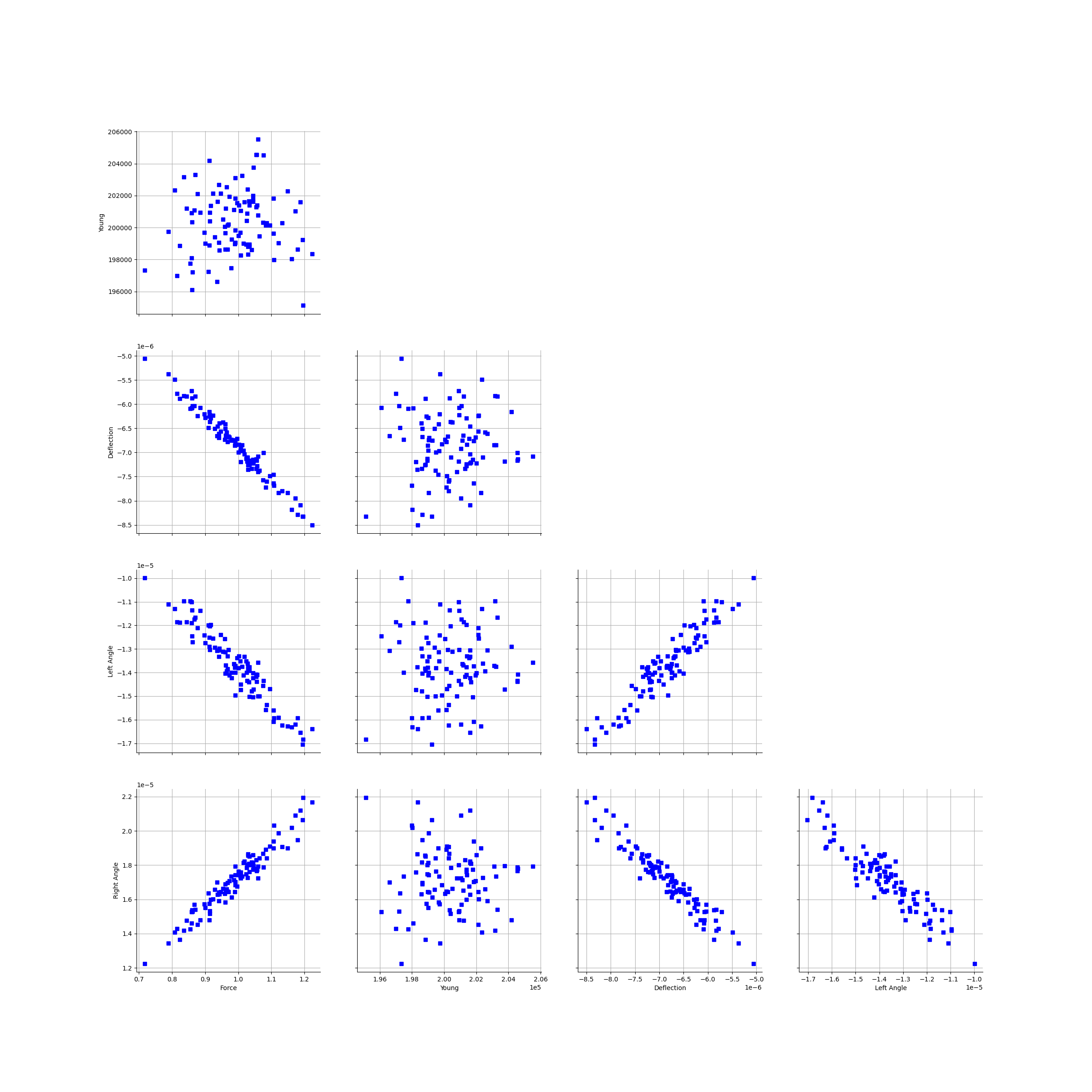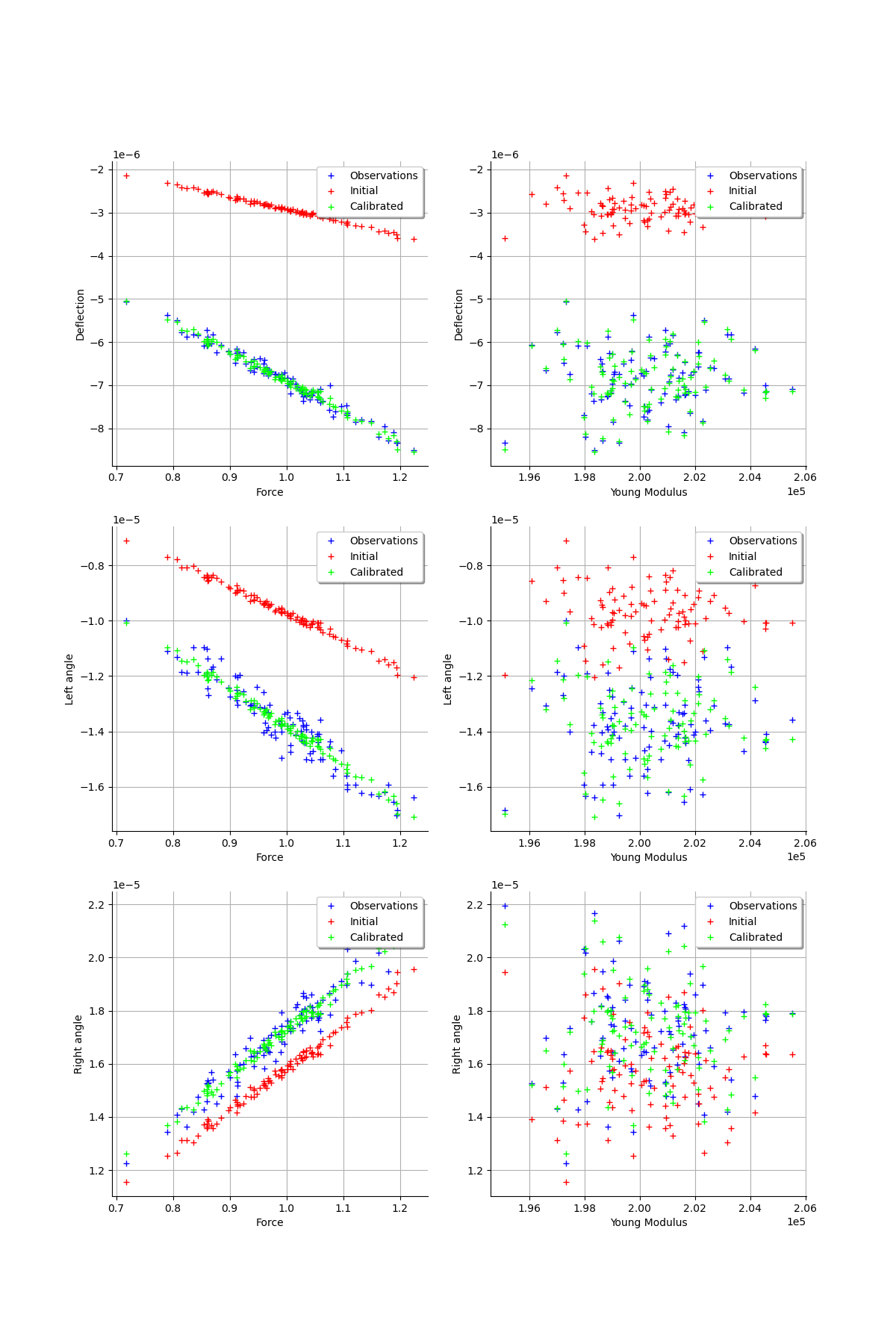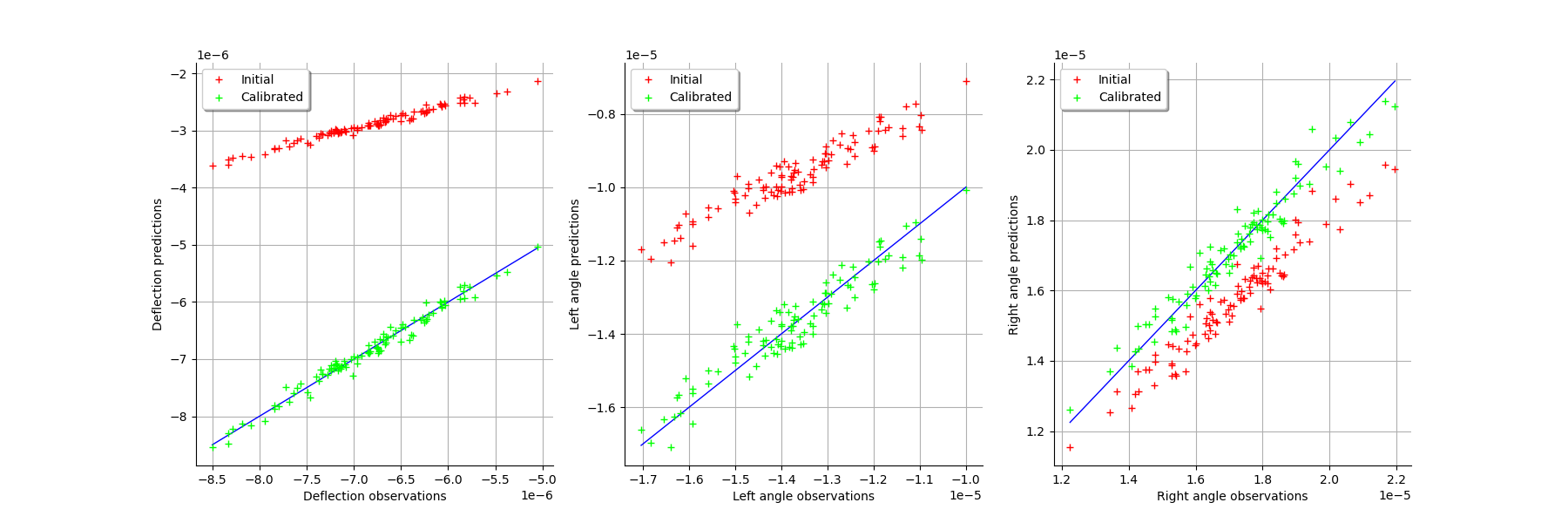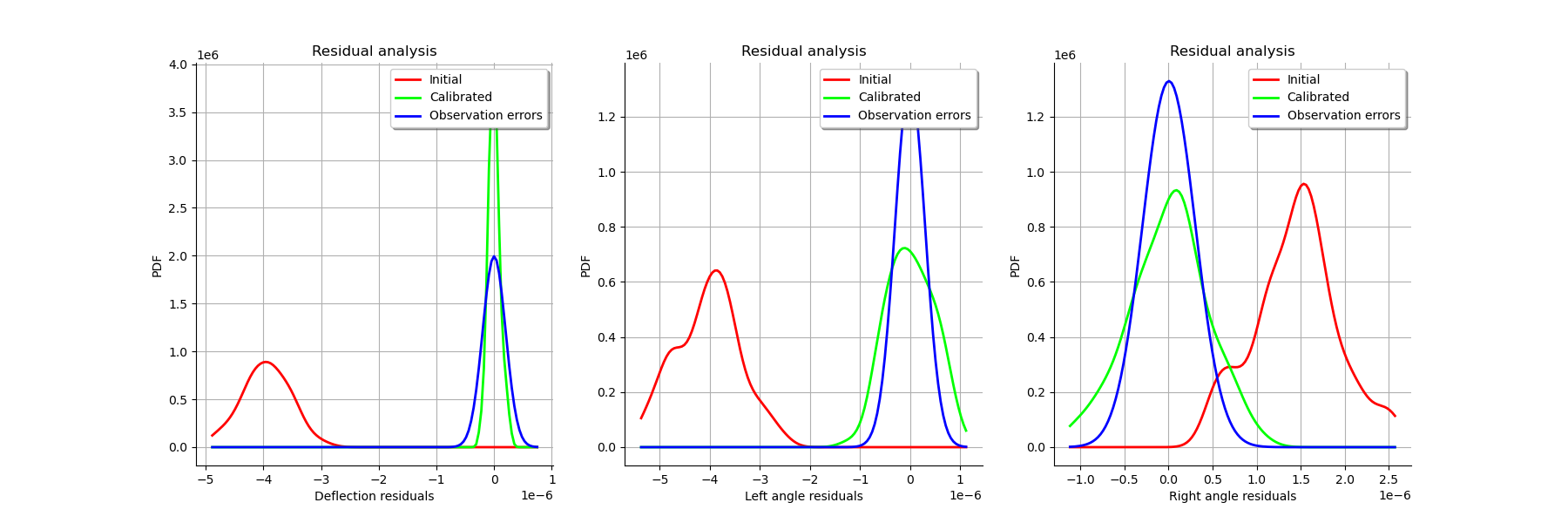Note
Click here to download the full example code
Calibration of the deflection of a tube¶
We consider a calibration of the deflection of a tube as described here.
import openturns as ot
import openturns.viewer as viewer
from matplotlib import pylab as plt
ot.Log.Show(ot.Log.NONE)
Create a calibration problem¶
We load the model from the use case module :
from openturns.usecases import deflection_tube as deflection_tube
dt = deflection_tube.DeflectionTube()
We create a sample out of our input distribution :
sampleSize = 100
inputSample = dt.inputDistribution.getSample(sampleSize)
inputSample[0:5]
We take the image of our input sample by the model :
outputDeflection = dt.model(inputSample)
outputDeflection[0:5]
observationNoiseSigma = [0.1e-6,0.05e-5,0.05e-5]
observationNoiseCovariance = ot.CovarianceMatrix(3)
for i in range(3):
observationNoiseCovariance[i,i] = observationNoiseSigma[i]**2
noiseSigma = ot.Normal([0.,0.,0.],observationNoiseCovariance)
sampleObservationNoise = noiseSigma.getSample(sampleSize)
observedOutput = outputDeflection + sampleObservationNoise
observedOutput[0:5]
observedInput = ot.Sample(sampleSize,2)
observedInput[:,0] = inputSample[:,0] # F
observedInput[:,1] = inputSample[:,5] # E
observedInput.setDescription(["Force","Young Modulus"])
observedInput[0:5]
fullSample = ot.Sample(sampleSize,5)
fullSample[:,0:2] = observedInput
fullSample[:,2:5] = observedOutput
fullSample.setDescription(["Force","Young","Deflection","Left Angle","Right Angle"])
fullSample[0:5]
graph = ot.VisualTest.DrawPairs(fullSample)
view = viewer.View(graph)

Setting up the calibration¶
XL = 1.4 # Exact : 1.5
Xa = 1.2 # Exact : 1.0
XD = 0.7 # Exact : 0.8
Xd = 0.2 # Exact : 0.1
thetaPrior = [XL, Xa, XD, Xd]
sigmaXL = 0.1 * XL
sigmaXa = 0.1 * Xa
sigmaXD = 0.1 * XD
sigmaXd = 0.1 * Xd
parameterCovariance = ot.CovarianceMatrix(4)
parameterCovariance[0,0] = sigmaXL**2
parameterCovariance[1,1] = sigmaXa**2
parameterCovariance[2,2] = sigmaXD**2
parameterCovariance[3,3] = sigmaXd**2
parameterCovariance
calibratedIndices = [1,2,3,4]
calibrationFunction = ot.ParametricFunction(dt.model, calibratedIndices, thetaPrior)
sigmaObservation = [0.2e-6,0.03e-5,0.03e-5] # Exact : 0.1e-6
errorCovariance = ot.CovarianceMatrix(3)
errorCovariance[0,0] = sigmaObservation[0]**2
errorCovariance[1,1] = sigmaObservation[1]**2
errorCovariance[2,2] = sigmaObservation[2]**2
calibrationFunction.setParameter(thetaPrior)
predictedOutput = calibrationFunction(observedInput)
predictedOutput[0:5]
Calibration with gaussian non linear least squares¶
algo = ot.GaussianNonLinearCalibration(calibrationFunction, observedInput, observedOutput, thetaPrior, parameterCovariance, errorCovariance)
algo.run()
calibrationResult = algo.getResult()
Analysis of the results¶
thetaMAP = calibrationResult.getParameterMAP()
thetaMAP
Compute a 95% confidence interval for each marginal.
thetaPosterior = calibrationResult.getParameterPosterior()
alpha = 0.95
dim = thetaPosterior.getDimension()
for i in range(dim):
print(thetaPosterior.getMarginal(i).computeBilateralConfidenceInterval(alpha))
Out:
[1.48002, 1.52078]
[0.97709, 1.02634]
[0.795846, 0.803887]
[0.199877, 0.199915]
graph = calibrationResult.drawObservationsVsInputs()
view = viewer.View(graph)

graph = calibrationResult.drawObservationsVsPredictions()
view = viewer.View(graph)

graph = calibrationResult.drawResiduals()
view = viewer.View(graph)

graph = calibrationResult.drawParameterDistributions()
view = viewer.View(graph)
plt.show()

Total running time of the script: ( 0 minutes 6.439 seconds)
 OpenTURNS
OpenTURNS